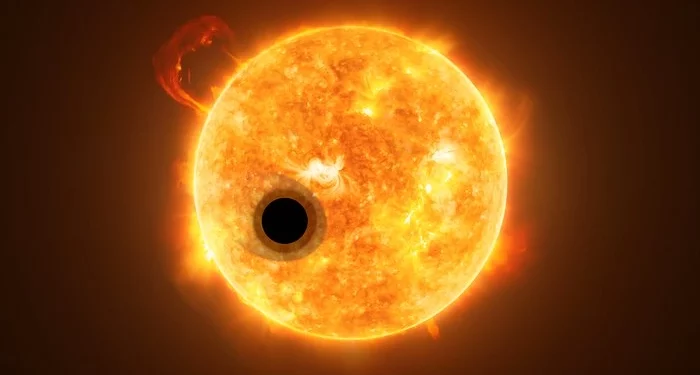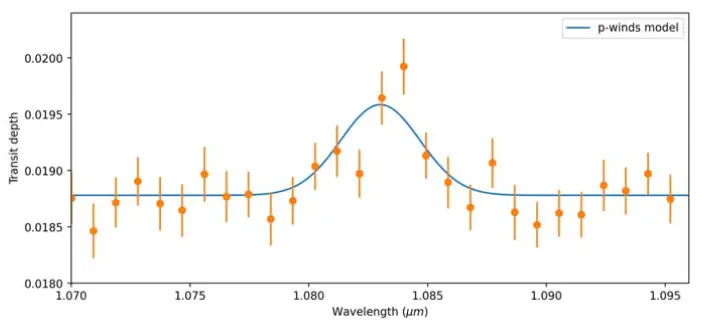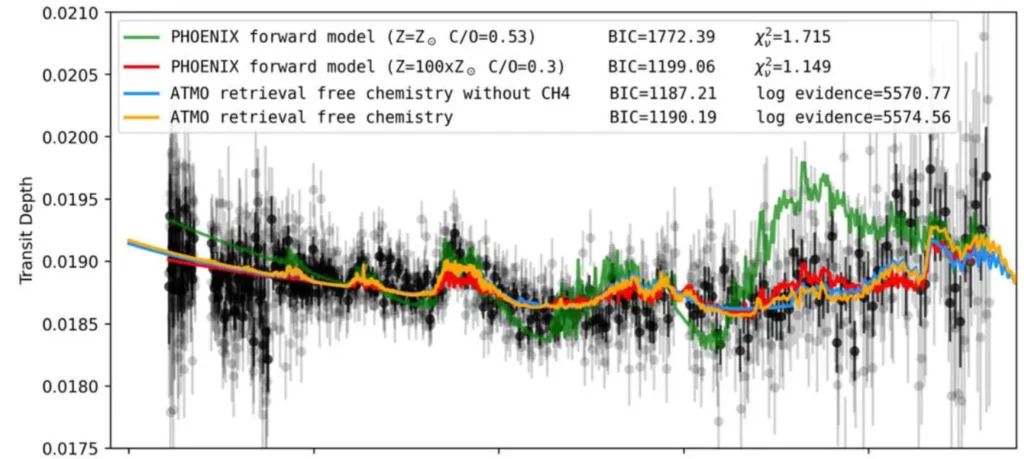A nearby exoplanet that is losing its atmosphere has a little tail that has been discovered by the James Webb Space Telescope.
With the James Webb Space Telescope (JWST) up and running, astronomers are getting a first look at the quirks of individual exoplanets. Features never before examined are coming into view. For instance, a recent study has revealed that the Jupiter-size, Saturn-mass exoplanet HAT-P-18b has a tiny tail.

JWST Finds a Corgi
Now more than a year past its launch, JWST is finally doing what it was designed to do: collecting photons and wowing astronomers with the precision of its data. One of the earliest flexes of its scientific power occurred last summer, when it trained its attention on the transit of HAT-P-18b.
The team, led by Guangwei Fu (Johns Hopkins University), found several molecules in the upper atmosphere of the planet using the Near Infrared Imager and Slitless Spectrograph (NIRISS) instrument. But what they didn’t find was more surprising.

The first of these surprises is a helium absorption signature; however, it’s not surrounding the planet. Instead, the team’s results indicate that HAT-P-18b is dragging along a faint tail of escaping helium. Similar features have been spotted trailing behind other planets, but this one was so subtle that ground-based observatories had missed it previously. In other words, HAT-P-18b is the “corgi” of the exoplanets: It has a tail, but it’s not a dominant structure.
Methane Mystery
The second surprise concerns a molecule not displaced from the planet, but possibly missing entirely.
One of the primary motivations for targeting HAT-P-18b specifically is its position in a uniquely helpful corner of parameter space for modelers working on a methane mystery. Hot planets with surface temperatures over 1000K are not expected to have any methane in their atmospheres, since thermodynamics at these extreme conditions prefer other species. Worlds cooler than this should show signs of absorption caused by methane molecules in the upper atmosphere intercepting photons with a specific wavelength.
Strangely, however, this prediction hasn’t panned out in previous studies. Searches of several planets that should have held methane turned up none. This tension called for a closer look: Were the assumptions baked into the models wrong, or was there something strange about the first worlds surveyed? With an equilibrium temperature of 800K, HAT-P-18b was the perfect target to help move the needle one way or another.

Fu et al. 2022
Fu and collaborators made no conclusive methane detection, further deepening the model mismatch mystery. Models which assume the atmosphere is in chemical equilibrium struggled to reproduce the combination of no-methane, yes-water seen in the data, which suggests that some other mechanism(s) are involved to remove the expected gas. Even more striking, other models which made no assumption about an equilibrium also did not confidently prefer including methane in the final fit over leaving it out entirely.
In all, JWST revealed HAT-P-18b to be a strange world, one which subverts our expectations of atmospheric chemistry but charms with a helium tail. We’ll have to wait for JWST observations of other planets before we know just how weird either of those traits truly is.
Citation
“Water and an Escaping Helium Tail Detected in the Hazy and Methane-depleted Atmosphere of HAT-P-18b from JWST NIRISS/SOSS,” Guangwei Fu et al 2022 ApJL 940 L35. doi:10.3847/2041-8213/ac9977
This post originally appeared on AAS Nova, which features research highlights from the journals of the American Astronomical Society. source: skyandtelescope.org
Do not forget to share your opinion with us to provide you with the best posts !



0 Comments